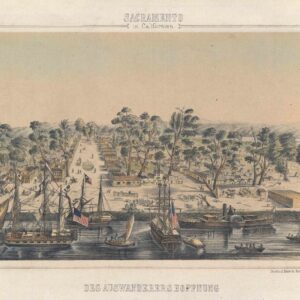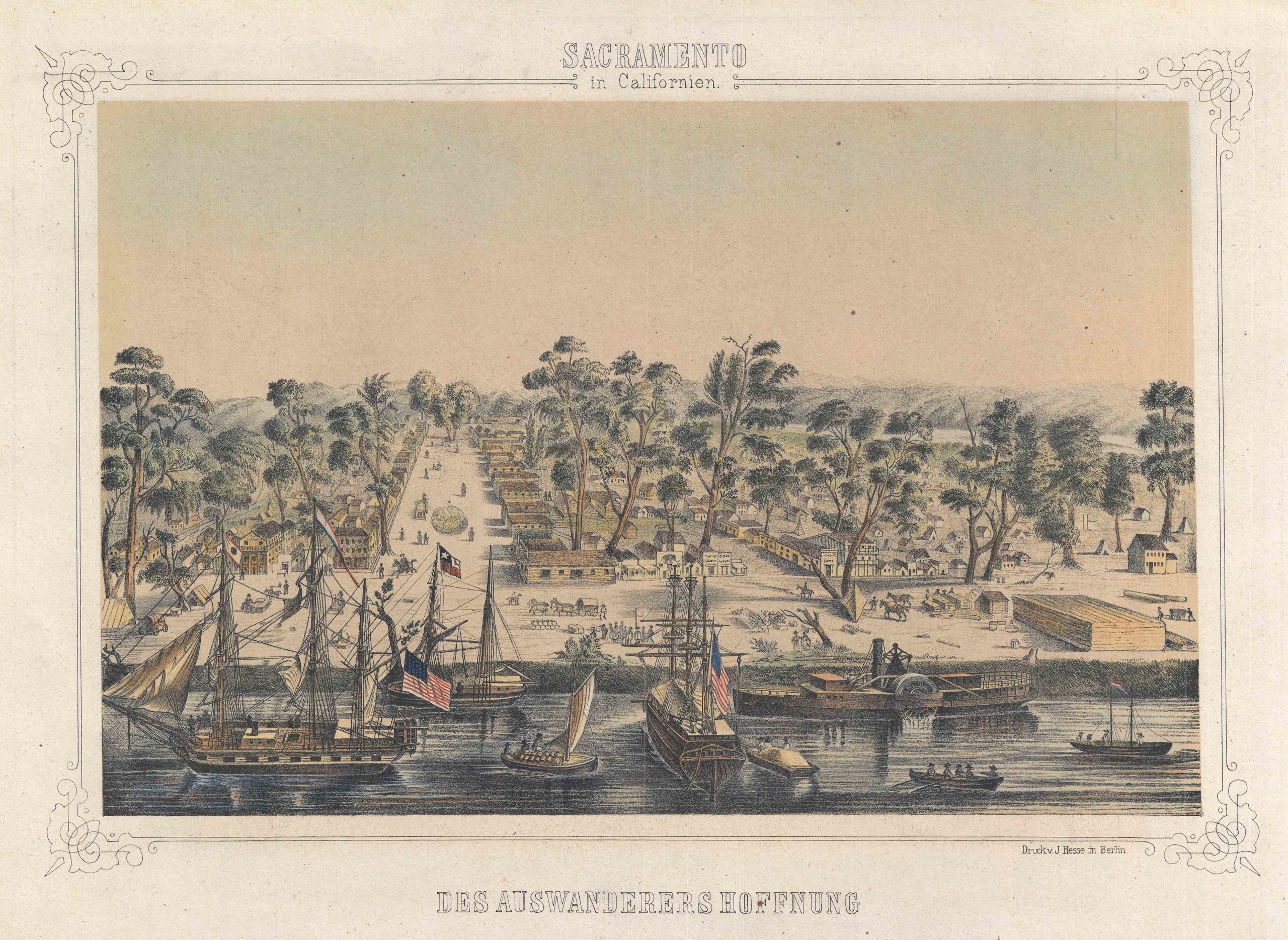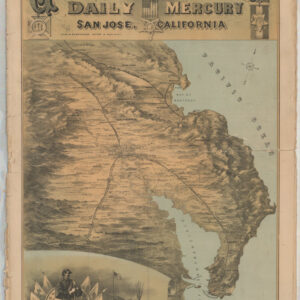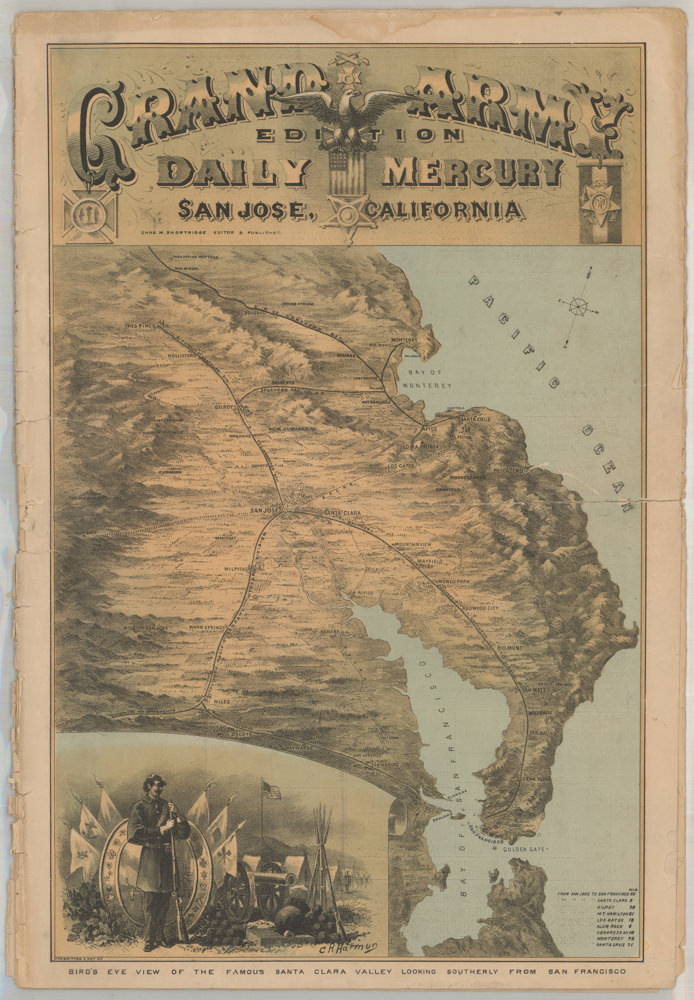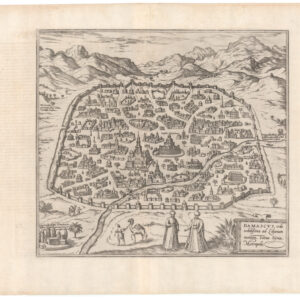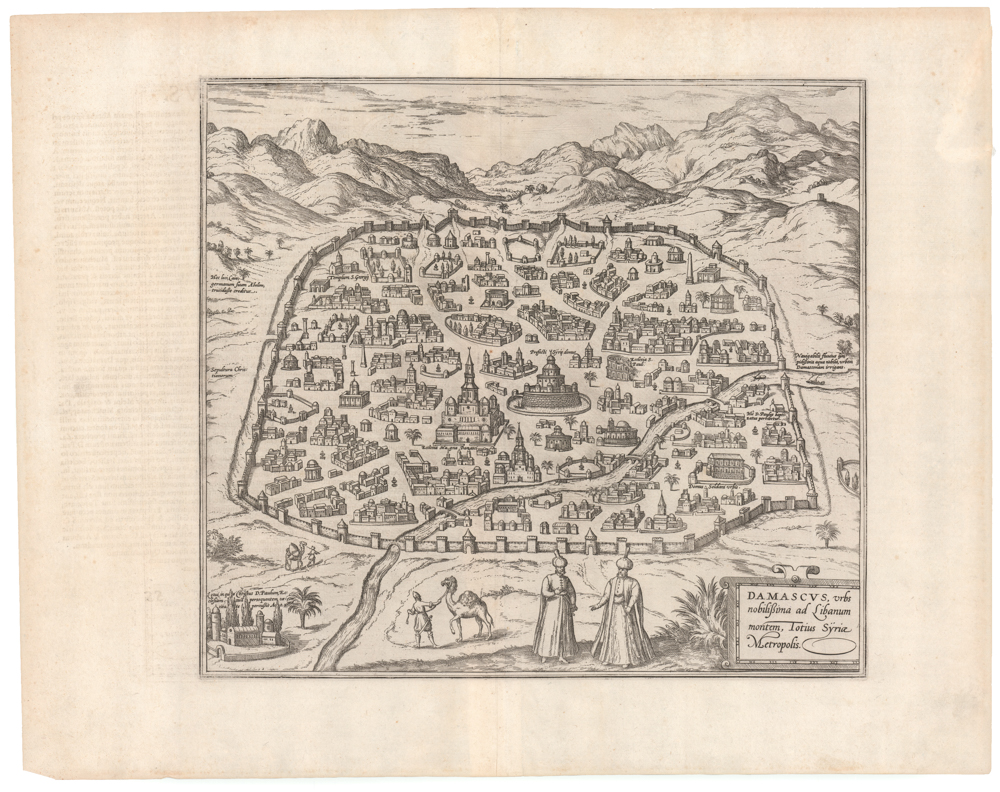Old color 1572 bird’s-eye-view of Rome by Braun and Hogenberg.
Roma
Out of stock
Description
This is a fine original color example of Braun & Hogenberg’s view of Rome, from an early edition of Braun & Hogenberg’s Civitatus Orbis Terrarum.
This striking work shows Rome as it was c. 1550. Included are various surviving features of ancient Rome: the surrounding walls, the Pantheon, the Coliseum, the Arch of Constantine, and the Forum Romanum. In the left corner in the foreground can be seen the Papal Palace and the Obelisk from the circus of Caligula and Nero.
It presents two figures in the foreground, and two extensive tables of explanations.
“The magnificent ancient ruins of the splendid buildings give a modest indication of the splendour the city formerly possessed. The Tiber flows into this city from the north and out again towards the south. But what more should I write about so famous a city, in which the successor to St Peter the Apostle and the supreme bishop of the Catholic Church has his seat, where the bones and relics of so many apostles and martyrs are to be seen?”
Cartographer(s):
Georg Braun (1541–1622) was a German geographer, publisher, and the canon of the Cologne chapter of St. Maria ad Gradus. From 1572, he edited the Civitates orbis terrarum, which contains 546 prospects, bird’s-eye views, and maps of cities from all around the world. As the principal editor, Braun acquired the tables, hired the various artists and contributors, and wrote the texts. He oversaw the project from its inception until its completion in 1617.
The main engraver for volumes I-IV of the Civitates orbis terrarum was Frans Hogenberg (1535–1590), a Flemish painter, engraver, and mapmaker, born in Mechelen and later established in Cologne. Hogenberg was a Protestant exile from the Spanish Netherlands who had worked with Abraham Ortelius on his iconic Theatrum Orbis Terrarum. His detailed depictions of architecture, figures, and heraldry helped define the genre of the Renaissance bird’s-eye view. By the time of his death in 1590, Hogenberg had secured his reputation as one of the era’s foremost cartographic artists.
Condition Description
Slight discoloration along the centerfold and around the 'M' in the title.
References
